Related Research Articles
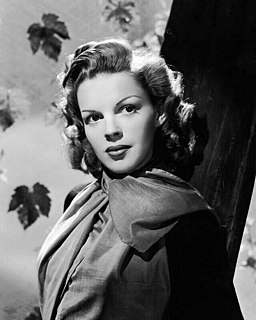
Judy Garland was an American actress, singer, vaudevillian, and dancer. With a career spanning 45 years, she attained international stardom as an actress in both musical and dramatic roles, as a recording artist, and on the concert stage. Renowned for her versatility, she received an Academy Juvenile Award, a Golden Globe Award, and a Special Tony Award. Garland was the first woman to win the Grammy Award for Album of the Year, which she won for her 1961 live recording titled Judy at Carnegie Hall.
"Stormy Weather" is a 1933 torch song written by Harold Arlen and Ted Koehler. Ethel Waters first sang it at The Cotton Club night club in Harlem in 1933 and recorded it that year, and in the same year it was sung in London by Elisabeth Welch and recorded by Frances Langford. Also 1933, for the first time in history the entire floor revue from Harlem's Cotton Club went on tour, playing theatres in principal cities. The revue was originally called The Cotton Club Parade of 1933 but for the road tour it was changed to the Stormy Weather Revue and as the name implies, the show contained the hit song "Stormy Weather" which was sung by Adelaide Hall.

The New York Philharmonic, officially the Philharmonic-Symphony Society of New York, Inc., globally known as New York Philharmonic Orchestra (NYPO) or New York Philharmonic-Symphony Orchestra, is a symphony orchestra based in New York City. It is one of the leading American orchestras popularly referred to as the "Big Five". The Philharmonic's home is David Geffen Hall, located in New York's Lincoln Center for the Performing Arts.

Carnegie Hall is a concert venue in Midtown Manhattan in New York City. It is at 881 Seventh Avenue, occupying the east side of Seventh Avenue between West 56th and 57th Streets. Designed by architect William Burnet Tuthill and built by philanthropist Andrew Carnegie, it is one of the most prestigious venues in the world for both classical music and popular music. Carnegie Hall has its own artistic programming, development, and marketing departments and presents about 250 performances each season. It is also rented out to performing groups.
The 4th Annual Grammy Awards were held on May 29, 1962, at Chicago, Los Angeles and New York. They recognized accomplishments by musicians from the year 1961. Henry Mancini won 5 awards.
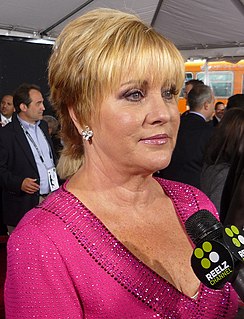
Lorna Luft is an American television, stage, and film actress, singer, and author.
Lyle Russell Cedric "Skitch" Henderson was a pianist, conductor, and composer. His nickname "Skitch" came from his ability to "re-sketch" a song in a different key and Bing Crosby suggested that he should use the name professionally.

David Geffen Hall is a concert hall in New York City's Lincoln Center for the Performing Arts complex on Manhattan's Upper West Side. The 2,738-seat auditorium opened in 1962, and is the home of the New York Philharmonic.

Carnegie Museums of Pittsburgh are four museums that are operated by the Carnegie Institute headquartered in the Carnegie Institute complex in the Oakland neighborhood of Pittsburgh, Pennsylvania. The Carnegie Institute complex, which includes the original museum, recital hall, and library, was added to the National Register of Historic Places on March 30, 1979.

The Children’s Museum of Manhattan was founded by Bette Korman, under the name GAME, in 1973. With New York City in a deep fiscal crisis, and school art, music, and cultural programs eliminated, a loosely organized, group of artists and educators set up a basement storefront to serve Harlem and the Upper West Side. With a challenge grant from the National Endowment for the Arts, a city-owned courthouse was renovated into a small exhibition, studio, and workshop and renamed the Manhattan Laboratory Museum. The museum became the Children’s Museum of Manhattan in the 1980s and moved to its current location on West 83rd Street in 1989. Its audience has grown to 325,000 visitors each year, which includes 30,000 children who visit as part of a school group and more than 34,000 children served through offsite outreach programs.
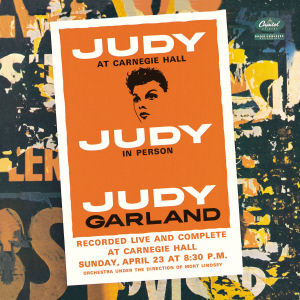
Judy at Carnegie Hall is a two-record live recording of a concert by Judy Garland at Carnegie Hall in New York, with backing orchestra led by Mort Lindsey. This concert appearance, on the night of Sunday April 23, 1961, has been called "the greatest night in show business history".

Alarm Will Sound is a 20-member chamber orchestra that focuses on recordings and performances of contemporary classical music. Its performances have been described as "equal parts exuberance, nonchalance, and virtuosity" by the Financial Times and as "a triumph of ensemble playing" by the San Francisco Chronicle. The New York Times said that Alarm Will Sound is "one of the most vital and original ensembles on the American music scene."
Ennead Architects LLP (/ˈenēˌad/) is a New York City-based architectural firm. Previously known as Polshek Partnership, the firm's partners renamed their practice in mid-2010.
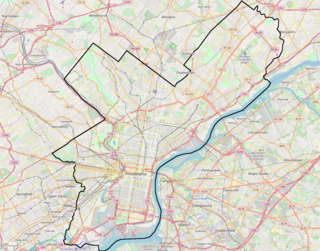
The National Museum of American Jewish History (NMAJH) is a Smithsonian-affiliated museum at 101 South Independence Mall East at Market Street in Center City Philadelphia. It was founded in 1976.
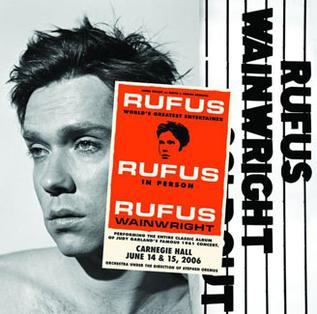
Rufus Does Judy at Carnegie Hall is the sixth album by the Canadian-American singer-songwriter Rufus Wainwright, released through Geffen Records in December 2007. The album consists of live recordings from his sold-out June 14–15, 2006, tribute concerts at Carnegie Hall to the American actress and singer Judy Garland. Backed by a 36-piece orchestra conducted by Stephen Oremus, Wainwright recreated Garland's April 23, 1961, concert, often considered "the greatest night in show business history". Garland's 1961 double album, Judy at Carnegie Hall, a comeback performance with more than 25 American pop and jazz standards, was highly successful, initially spending 95 weeks on the Billboard charts and garnering five Grammy Awards.

Actress Judy Garland (1922–1969) is widely considered as a gay icon. The Advocate has called Garland "The Elvis of homosexuals". The reasons frequently given for her standing as an icon among gay men are admiration of her ability as a performer, the way her personal struggles seemed to mirror those of gay men in America during the height of her fame, and her value as a camp figure. Garland's role as Dorothy Gale in The Wizard of Oz is particularly known for contributing to this status.

Sidney Bernstein was an American music promoter, talent manager, and author. Bernstein changed the American music scene in the 1960s by bringing the Beatles, the Rolling Stones, Herman's Hermits, the Moody Blues, and the Kinks to America. He was the first impresario to organize rock concerts at sports stadiums.
Richard Muenz is an American actor and baritone who is mostly known for his work within American theatre. Muenz has frequently performed in musicals and in concerts. He has also periodically acted on television.
Robert White is an American tenor and voice teacher who has had an active performance career for eight decades. If he is not better known to the general public, it is because his career, confined to art song and the concert stage, has not brought him the wider renown of singers who make their careers in opera; but he has long been cherished by connoisseurs of vocal music for the pure lyric sweetness of his voice and his scrupulous musicianship.
References
- 1 2 3 Allan Kozinn (1992-02-08). "Music Notes; Composers Orchestra Defies the Conventional". The New York Times. Retrieved 2008-08-26.
- 1 2 Ward, Candace (2000). New York City Museum Guide. Courier Dover Publications. p. 58. ISBN 0486410005.
- ↑ Hughes, Carl; Amber Johnson; Kate Penner (2007). Let's Go New York City. Macmillan. p. 185. ISBN 0312360878.
- ↑ "Carnegie Hall". National Historic Landmark summary listing. National Park Service. 2007-09-09.
- 1 2 Egginton, Jane; Nick O'Donnell (2007). New York Walks. Globe Pequot. p. 54. ISBN 0762741627.
- ↑ Reynolds, Christopher (23 March 2018). "Step inside New York's Carnegie Hall, where beautiful music and stirring history ring out". Los Angeles Times. Retrieved 20 August 2021.
- ↑ Camille Paglia (1998-06-14). "Judy Garland as a Force of Nature". The New York Times. Retrieved 2008-08-26.
- ↑ "Inside the Carnegie Hall Archives, Built into a Former Elaborate Artist Studio". Untapped New York. 26 September 2019. Retrieved 20 August 2021.
- ↑ "Learn About the Rose Archives". www.carnegiehall.org. Retrieved 20 August 2021.
- ↑ Patricia O'Haire (1997-01-17). "Winter in the City at Carnegie". The Daily News. Retrieved 2008-08-26.[ permanent dead link ]
- ↑ Allan Kozinn (1997-03-01). "Spirituals for a Symbol of Triumph". The New York Times. Retrieved 2008-08-26.
- ↑ "Centennial Swing: Let the Drums Roll Out, Let the Trumpets Blare". The New York Times. 1998-09-18. Retrieved 2008-08-26.
- ↑ James R. Oestreich (1993-11-14). "CLASSICAL MUSIC; When the Big Break Came for Bernstein, He Was Not a Bit Shy". The New York Times. Retrieved 2008-08-26.
- ↑ Hookey, Sarah (29 May 2019). "Carnegie Hall's Rose Museum Features New Exhibit on Andrew Carnegie". BroadwayWorld.com. Retrieved 20 August 2021.